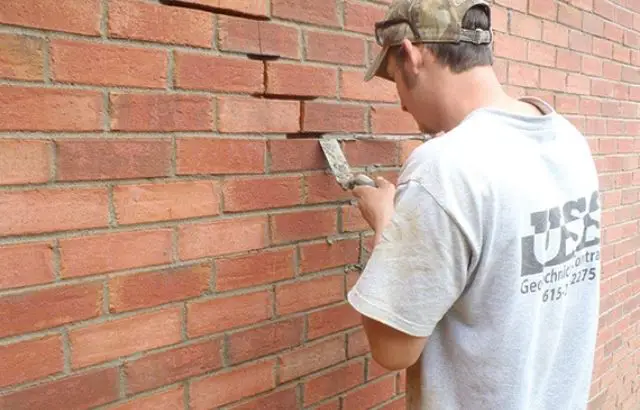Only a few people are familiar with the concept of a drainage pit. It is a dry well, used primarily to manage and store excess water. This is why it is very crucial because it prevents water wastage as well as property damage due to unnecessary leakage. Let’s see how to build a drainage pit.
This property damage can be as small as a few cracks in the wall or as big as a toppled ceiling that fails to hold against the constant water dripping. For this purpose, this guide will help you DIY a drainage pit if you feel water management might soon become an issue. Follow these steps to make a fool-proof drainage pit better than professionals!
- Site Selection: Choose an appropriate location away from structures and trees.
- Marking: Mark the perimeter of the pit using spray paint or stakes.
- Digging: Excavate the marked area to the desired depth, usually 2-4 feet deep.
- Pit Lining: Line the pit with landscape fabric to prevent soil infiltration.
- Add Gravel: Fill the bottom of the pit with a few inches of coarse gravel.
- Perforated Pipe: Place a perforated drain pipe in the center of connecting to another drainage.
- More Gravel: Fill the pit almost to the top with coarse gravel, leaving a few inches below ground level.
- Landscape Fabric: Fold the excess landscape fabric over the gravel.
- Top Layer: Cover the fabric with soil, sand, or turf to match the surrounding area.
- Maintenance: Periodically check and clear debris from the surface to ensure effective drainage.
Let’s learn in detail:
How to Build a Drainage Pit
Step#01 Site Selection:

You can begin by choosing the best possible location for your drainage pit. You have to keep the following things in mind while choosing a location:
- It should be at a safe distance from your property. This is done to avoid any damage that water can potentially pose to the property.
- It should not disrupt plantations or vegetation. So avoid choosing a location in the middle of trees and plants.
Step#02 Marking:

Once you have decided upon a place, the next step is to mark that spot. You can use spray paint, chalk, or stakes. Mark all around the perimeters carefully, being mindful that you will be digging along those markings. That is why it is best if those indentations are as clear as possible so the shape of the drainage pit can be near perfect.
Step#03 Digging:

Now, get your tools ready because we will be digging up the soil. Remember the markings? You must follow those and excavate as deep as two to four feet. This is the ideal and sufficient depth for water storage that does not endanger the quality or stability of the pit. Make sure to keep all underground wiring and pipes intact. You don’t want another problem on your hands.
Step#04 Pit Lining:

Take a landscape fabric to line the insides of your newly dug pit. This is done to prevent the soil from infiltrating the water and polluting or contaminating it. The lining will also optimize the durability and integrity of the pit.
Step#05 Add Gravel:

Once the lining is done, the next step is to create a base that is stable enough to hold the water. For that, the base has to be filled with coarse gravel. A few inches should be enough. This added layer will allow the water to drain properly. At the same time, the accumulation of silt is avoided.
Step#06 Perforated Pipe:

Now that the basic structure is ready, it is time to think of extensions. In case the drainage pit needs to be connected to any other drainage system, a pipe has to be connected. For that, situate a perforated drain pipe centrally in the pit. It is going to drive the stored water away from your property.
Step#07 More Gravel:
Now, it’s time to fill up that pit with more gravel. Start loading up until you reach the top. Make sure to leave a few inches below the ground level.
Step#08 Landscape Fabric:

Remember the fabric we placed as our first layer? That needs to be folded to give a neat and sleek outlook to the pit, so fold any excess fabric over the gravel to give it another layer of protection. This will also ensure no debris clogs the draining pit or obstructs the drainage process.
Step#09 Top Layer:

Now, to complete the underground drainage pit, cover the top layer with soil or turf. This will make it blend more easily and seamlessly with the surrounding soil. The pit peeking out from plain land will give a very rough look, so take your time to blend it in.
Step#10 Maintenance:
Everything requires maintenance. Similarly, this water drainage pit will need regular cleaning and inspection every few days. This is crucial for its proper functioning, as well as preventing debris from piling on, which can clog the pit if left unmonitored.
My Opinion
Ethically, it is your responsibility to consult the local authorities and go through the rules and regulations. This is a prerequisite for starting such construction projects all on your own. You will be able to create an efficient drainage pit. A professional could enter the picture to assess the situation of the property. This also means extra guidance on how the drainage system should run.




